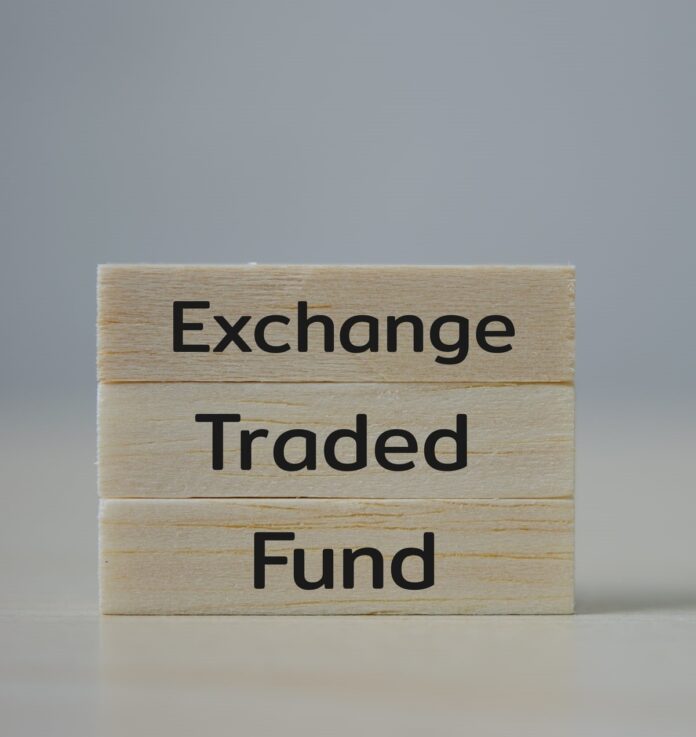Exchange Traded Funds (ETFs) and ETF investing have pretty much revolutionized investing for both institutional and individual investors.
Building a low-cost ETF portfolio is one of the most efficient ways to invest in the long term.
Personally, I started out with individual stocks but have slowly incorporated ETFs into my investment strategy over the years.
One of the things many investors ponder over is the number of ETFs they should own.
Surprisingly, the answer is both very simple and quite complicated.
What Is an ETF
An ETF (Exchange-Traded Fund) is a type of fund that tracks, for example, a specific index (like the S&P 500), sector, or commodity.
You can buy an ETF in the stock market in the same way as you would buy or sell an individual stock.
So, unlike mutual funds, an ETF updates its price constantly and can be sold intraday at different prices.
As you can imagine, ETFs offer an incredibly handy way to build a widely diversified portfolio with minimal effort.
While there are a lot of different ETFs out there, the ones I’m talking about here are ETFs that focus on stocks, if not mentioned otherwise.
How Many ETFs Should I Own
Okay, so how many of these bad boys should you have?
Well, the experts (and most people) would agree that you’ll achieve optimal portfolio diversification with about 5 to 10 different ETFs.
Funds should be geographically diversified across different asset classes like equities, commodities, and bonds.
In reality, it’s a bit more complicated than that.
How Many ETFs Should You REALLY Own
When it comes to building an optimally diversified portfolio, there’s not a single right answer that works for everyone.
As with all other investments, it too depends on your tolerance for risk, investment goals, portfolio size, and other psychological factors.
Risk tolerance
When deciding on how many ETFs you should buy, you first need to define your risk profile.
If you have a high tolerance for risk, you can get by with fewer ETFs.
Some investors want to focus on a certain asset class, industry, or country.
While all ETFs are diversified to some extent, having a focused ETF portfolio can have quite a bit of risk market, industry, or country-related risk.
People who want to diversify across different asset classes, countries, and industries, will indeed eventually have around 5 to 10 ETFs.
Investment Goals
The goal of investing is to accumulate and/or maintain wealth. Accumulating wealth requires a higher risk level while maintaining wealth can be managed with less risk.
If you wish to strive for higher returns, you need to have a more focused portfolio, while maintaining wealth requires more diversification.
The usual way is to start with a more focused portfolio and diversify over time, as your start to move from the accumulating phase to the maintain phase.
ETF Portfolio Size
As a rule of thumb, the more capital you have, the more ETFs you can own.
If you’re just beginning to build your ETF portfolio, it’s crucial to minimize your fees straight from the beginning.
Depending on how you invest, you might have fixed transaction fees. What this means is that you want to make as few transactions as possible.
So, instead of making five transactions per month in five different ETFs, you might want to start with just one to minimize expenses.
What I would do as a beginner is start with a more diversified ETF and make it the core of my portfolio. After that, I’d gradually diversify to other, more focused ETFs that can possibly offer higher returns.
An example of this would be to first invest in a total stock market ETF and then seek higher returns from ETFs that focus on growth stocks or emerging markets.
Psychological Factors
There’s nothing wrong with owning one or two ETFs in the long term. In fact, as we discover later in this post, you can do just fine with a single ETF.
If you’re considering having a more focused investment portfolio, there are a couple of psychological factors to consider.
Holding only one or two ETFs can be mentally straining. There’s a reason why investors with larger portfolios tend to diversify.
Then again, having a widely diversified portfolio can feel like you’re missing out on potential extra returns.
Extremities are often mentally taxing, which is why the sweet spot is probably somewhere in between.
Cons of Having Too Many ETFs
“Too much of anything is not good for you, baby”. – Barry White
Overlap
When you own multiple ETFs and are planning to buy more, you should first make sure they don’t have similar holdings. Owning the same asset twice is not diversifying.
For example, if we compare iShares Core S&P 500 UCITS ETF to iShares U.S. Technology ETF, we can see that the top holdings are practically identical.
So, if you would own both, you’d have overexposure to companies like Microsoft, Alphabet, and Apple.
Underperformance
While having an overly focused ETF portfolio can be a risky strategy, diversifying too much isn’t the best way to go either.
The more ETFs you own, the more likely you are to dilute the returns from the well-performing ones.
In other words, when you spread your butter too thin, you ruin both the bread and the butter.
Fees
When you own a lot of different funds, you pay fees for every one of them. While ETFs have lower fees than most investments, they still start to add up if you own too many of them.
Especially if you have two that are identical, you’re basically paying double for owning the same companies.
Also, if you tend to make a lot of transactions, you pay for each and every one of them. The biggest drag that comes from fees is when you make a lot of small transactions with fixed fees.
Can You Have Only One ETF
Theoretically speaking, yes. You can build your entire portfolio and get great results with just one ETF.
If we think about the S&P 500, for example, you would’ve done just fine by merely owning that one fund.
Then again, you’d have considerable country risk not to mention the psychological strain of putting your eggs in one basket.
When investing in stocks, the safest bet would be to choose an ETF that is diversified globally to different asset classes.
An interesting point is that most global ETFs tend to have over 50% invested in the U.S., and the biggest holdings are usually the largest U.S. companies like Apple, Microsoft, and Alphabet.
So, in a way, U.S. stocks tend to be overweighted. Then again, the biggest and most profitable companies often come from the U.S., so if you would exclude them, you’d most likely underperform.
If you wish to play it safe and have a more diversified single-ETF strategy, you can always purchase a widely diversified ETF like Vanguard Conservative ETF Portfolio.
This way you can get a well-diversified portfolio with only one ETF.




